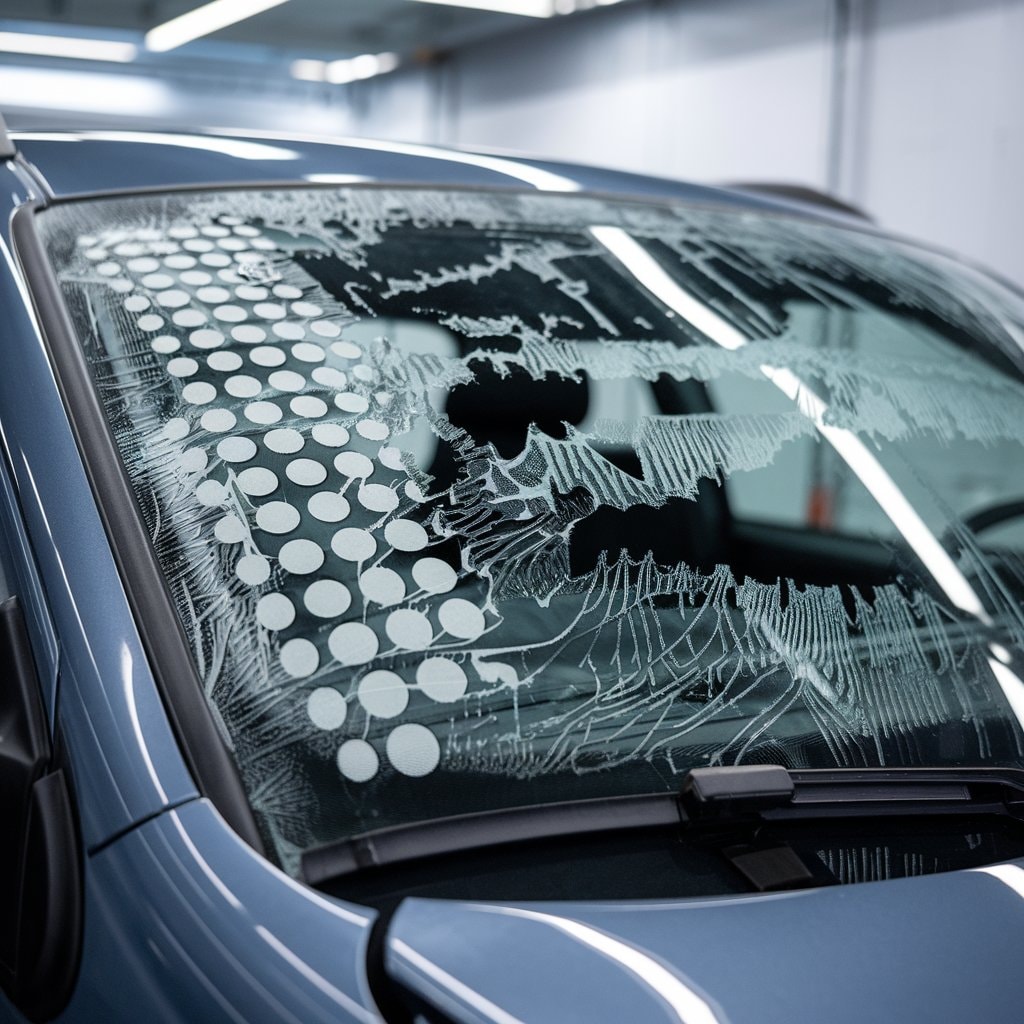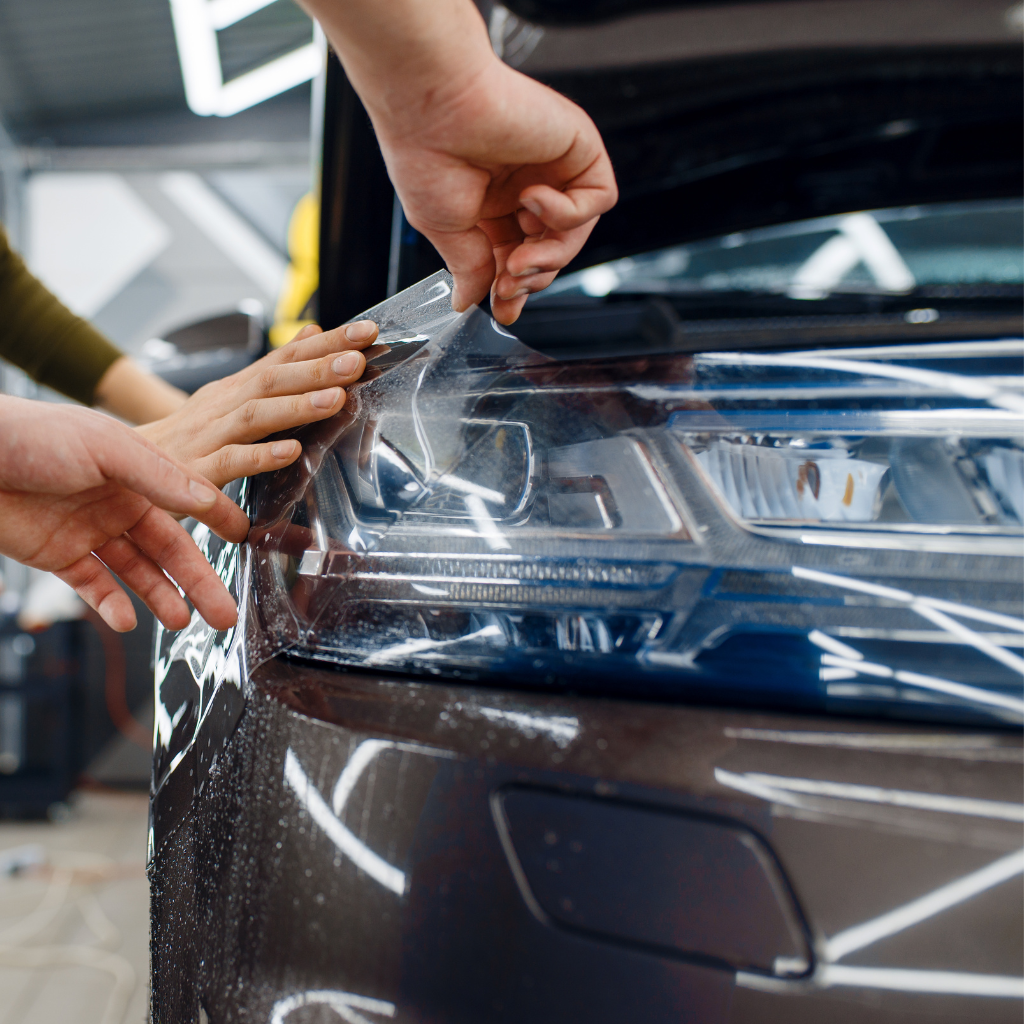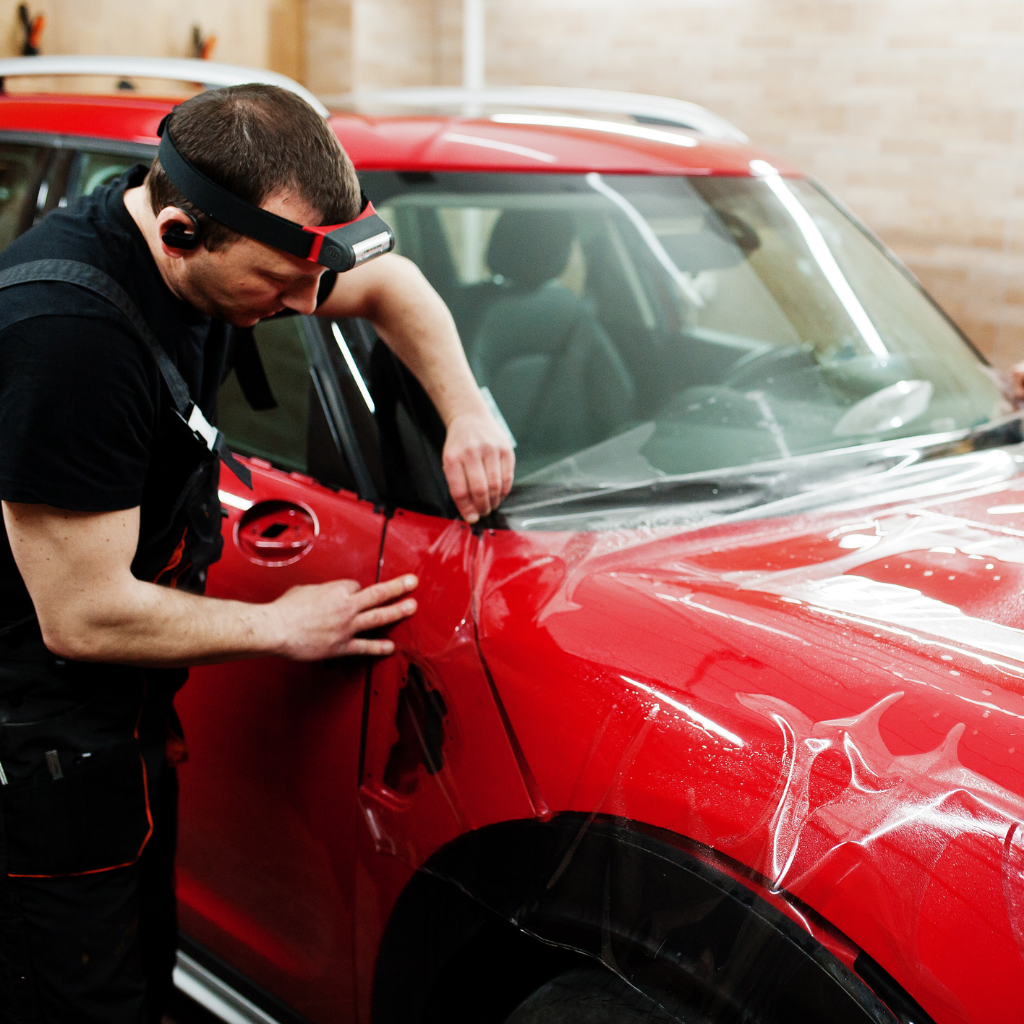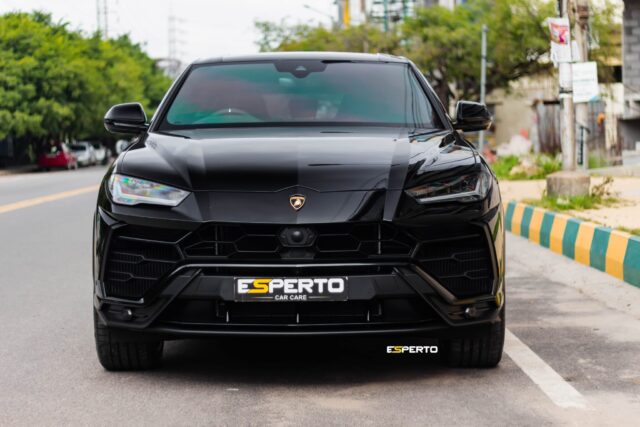Paint Protection Film (PPF) typically lasts five to ten years, depending on several key factors. The quality of the film influences the durability of PPF, the conditions it’s exposed to, and how well it is maintained. Factors like environmental pollutants, UV exposure, and the frequency of maintenance can significantly affect the film’s longevity. Consider further exploration for a deeper understanding of how these factors interact and advice on maximizing PPF’s lifespan.
What is Paint Protection Film and How Does it Work?
Paint Protection Film (PPF) is a transparent, thin layer applied to a car’s exterior to shield the paint from scratches, chips, and contaminants.
This film acts as a barrier, preserving the aesthetic and integrity of the vehicle’s surface.
Understanding the Basics of PPF
A Paint Protection Film (PPF), is a durable barrier that shields a vehicle’s paint surface from scratches, chips, and environmental contaminants.
This protective film is typically made from thermoplastic urethane and is renowned for its elasticity, clarity, and strength.
Key benefits of using a high-quality PPF include:
- Self-healing properties: Minor scratches can disappear with heat application.
- Extended car’s paint lifespan: Protects against the wear and tear that ages a vehicle’s appearance.
- Ease of maintenance: This keeps the car looking newer for longer without extensive upkeep.
The PPF installation process is essential for ensuring the film’s effectiveness and maximizing the PPF lifespan.
Properly applied, paint protection film preserves the aesthetic and value of factory paint on the car.
How PPF Protects Your Car’s Paint
To safeguard a vehicle’s exterior effectively, Paint Protection Film (PPF) acts as a nearly invisible shield that adheres to the paint surface.
This car paint protection film forms a durable, protective coating explicitly designed to protect your new or used vehicle that’s paint from damage and wear. Covering the car’s paint surface, PPF prevents the paint from scratches and minor abrasions that are familiar with everyday use.
It also offers protection against scratches from road debris, stones, and other harsh elements. Furthermore, PPF assists in protecting the paint by maintaining the original appearance of the vehicle.
As a result, this thin layer becomes an essential defense, prolonging the pristine condition and aesthetic value of the car’s exterior.
Benefits of Applying Car Paint Protection Film
Building on the various protective properties and qualities previously discussed, the advantages of applying Paint Protection Film extend beyond mere safeguarding.
This self-healing film applied to the vehicle’s surface offers superior protection that helps extend the paint protection film’s lifespan considerably. High-quality PPF can last for years, maintaining the pristine appearance of your car’s paint while shielding it from environmental hazards and minor abrasions.
Benefits of PPF include:
- Enhanced Durability: Protects against scratches, stone chips, and chemical stains.
- Cost Efficiency: Reduces the need for frequent paint jobs, preserving the car’s value.
- Aesthetic Preservation: Keeps your car’s paint looking new, enhancing overall vehicle appearance.
How Long Does Paint Protection Film Last on a Car?
The durability of paint protection film (PPF) on a car can vary considerably based on several factors.
Typically, PPF is designed to last anywhere from five to ten years, depending on the product quality and environmental exposure.
To maximize the lifespan of PPF, proper maintenance and care are essential.

Factors Affecting the Lifespan of PPF
While various factors can influence the lifespan of Paint Protection Film (PPF) on a vehicle, environmental conditions, maintenance habits, and the quality of the film itself play fundamental roles.
The lifespan of PPF can vary greatly depending on how well the film is maintained—professional installation guarantees that PPF is applied correctly, which is vital for longevity.
External elements such as UV rays, dirt, and pollutants can degrade the film unless adequately managed. To keep PPF in ideal condition, avoiding harsh chemicals and practicing proper maintenance are imperative.
High-quality PPF generally withstands wear better, affecting how long PPF lasts.
Key factors include:
- Quality of the PPF
- Maintenance practices
- Environmental exposure
How Long Does PPF Typically Last?
Given that various factors affect its durability, the typical lifespan of Paint Protection Film (PPF) on a vehicle can range from five to ten years.
High-quality PPF, when applied by a professional installer, can last up to 10 years, ensuring that the film adheres properly without any issues such as air bubbles or wrinkles that might result from improper installation.
Lower-grade films may last anywhere from 5 years, mainly if not maintained correctly. Regular washing and avoiding harsh chemicals are essential for preserving the lifespan of paint protection film.
Consequently, how long PPF typically lasts depends on the film’s quality and adherence to proper care guidelines.
How to Extend the Life of Your PPF
Most car owners should adhere to a strict maintenance routine to maximize the longevity of paint protection film (PPF) on a vehicle.
Ensuring that PPF maintains its protective benefits requires regular care. Here are essential tips for PPF maintenance:
- Regular Cleaning: Wash the vehicle frequently to prevent the buildup of dirt and debris on the film, which can cause scratches.
- Proper Storage: Keep the car in a garage or under a cover to protect the PPF from excessive UV exposure and environmental contaminants.
- Immediate Attention to Stains: Quickly remove any Stains like bird droppings or tree sap, as they can etch into the high-quality PPF and degrade its high gloss finish.
Is Paint Protection Film Worth the Investment?
As vehicle owners consider various methods to protect their car’s exterior, Paint Protection Film (PPF) is a notable option.
This section explores how PPF stacks up against other protective measures, delving into a detailed cost-benefit analysis to determine its value.
Additionally, it examines why some car owners might prefer PPF over alternative solutions.
Comparing PPF with Other Protection Methods
While paint protection film (PPF) offers notable durability and aesthetic preservation for vehicle exteriors, it is essential to assess its value compared to other automotive protection methods such as ceramic coatings or traditional waxing.
PPF provides better protection against light scratches and resists stains effectively, which are key advantages over alternatives.
- Durability: High-quality PPF film typically outlasts other paint protection options, maintaining the vehicle’s appearance for longer.
- Maintenance: PPF helps preserve the original paint by shielding against environmental damage, whereas ceramic coating and wax need more frequent reapplication.
- Performance: Paint protection film depends on its ability to self-heal, offering a unique advantage in reducing visible wear and tear.
These factors suggest that PPF might offer a more all-encompassing protection solution.
Cost vs. Benefits of Installing PPF
Having compared paint protection film (PPF) with other automotive protection methods, the discussion shifts to evaluate whether the cost of PPF justifies its benefits.
The paint protection film cost can vary depending on the vehicle size and quality of film used, but investing in paint protection film often proves advantageous. A high-quality PPF can last between five and ten years, underscoring the longevity of the film.
This durability protects against scratches and environmental damage, preserving the vehicle’s aesthetic appeal and enhancing its resale value.
The offer multiple benefits alone of paint protection film, especially in maintaining a car’s condition and reducing maintenance costs over time, strongly argue that paint protection film is worth the investment.
Why Choose PPF for Your Car?
When considering the protection of a car’s exterior, paint protection film (PPF) emerges as a superior choice for many vehicle owners. PPF serves as a protective shield for your car’s paint from various external threats that can damage its appearance. This film provides excellent protection, especially in environments prone to causing paint damage.
Key benefits include:
- Preservation of the car’s appearance: PPF helps keep your car’s paint looking newer for longer.
- Resistance to environmental damage: Protects against scratches, UV rays, and chemical stains.
- Enhanced resale value: A vehicle with PPF tends to maintain a higher resale value due to its pristine exterior condition.
Investing in a car with PPF can save money on costly repairs and maintain the car’s aesthetic appeal.
How to Choose the Best Paint Protection Film for Your Car
Choosing the proper paint protection film (PPF) for a car involves careful evaluation of the film’s quality.
Consumers should be aware of specific features that indicate a high-quality PPF. These include durability, clarity, installation quality, and warranty coverage.
Evaluating the Quality of the Film
How does one determine the quality of paint protection film for ideal vehicle care? The best paint protection film should exhibit superior durability and resilience, which are essential for guarding against scratches or damage.
Key factors include the material composition, primarily polyurethane film, known for its robustness and ability to shield the surface of the car without altering its appearance.
- Thickness of the Film: Thicker films generally offer better protection.
- Composition of the Clear Coat: A high-quality clear coat enhances resistance to staining and yellowing.
- Adhesive Quality: This guarantees the film adheres smoothly and lasts longer without peeling.
Evaluating these aspects guarantees the film provides maximum protection, maintaining the vehicle’s aesthetic while preventing damage to the film over time.

What to Look for in a High-Quality PPF
After evaluating the quality of paint protection films based on durability, thickness, composition, and adhesive properties, it becomes necessary to understand how to select the best product for one’s vehicle.
When choosing a paint protection film (PPF), prioritize options that offer long-lasting protection and a self-healing capability to maintain the car’s paint in pristine condition. A high-quality PPF should feature multiple layers for enhanced durability and a glossy finish to improve the vehicle’s appearance.
Consult a professional detailer and opt for a reputable installer to guarantee precise application. Additionally, verify that the PPF is explicitly designed to protect your car’s paint from scratches, stains, and weather elements, confirming its effectiveness and value.
FAQs About Paint Protection Film
As consumers consider the benefits of applying paint protection film (PPF) to their vehicles, common questions arise regarding its impact and maintenance.
Concerns include whether PPF alters the car’s aesthetic appeal, the possibility of removing the film without harming the underlying paint, and the type of upkeep required to maintain its condition.
Addressing these queries can help car owners make informed decisions about protecting their vehicle’s exterior.
Does PPF Affect the Appearance of My Car?
Paint protection film also improves a vehicle’s aesthetic appeal while working to keep your car’s paint safe. It is designed to be transparent, thereby preserving the original paint and the outside look of your vehicle.
Here are several key benefits:
- Prevents Swirl Marks: PPF protects against minor abrasions and swirl marks.
- Maintains Shine: It keeps the original paint looking newer for longer.
- Invisible Protection: The film is virtually invisible, ensuring that your car’s aesthetic appeal is not compromised.
Therefore, PPF helps protect your car’s paint while maintaining its original beauty, answering how long paint protection film lasts with its durable characteristics.
Can PPF be safely removed without harming the paint?
Many car owners who appreciate the benefits of paint protection film (PPF) wonder about its removal process and whether it can be done without harming the underlying paint.
Fortunately, if properly installed and maintained, PPF can be removed from painted surfaces without causing damage to the paint. This characteristic is essential in maintaining the car’s resale value and keeping the car’s paint pristine.
Professional removal is recommended to guarantee the paint protection film does not leave residues or minor abrasions, which might require paint correction.
This process helps protect your car’s paint and the outside, ensuring that PPF can be applied or re-applied as needed without compromising the integrity or appearance of the car’s paint.

Is Maintenance Required for PPF?
Does paint protection film (PPF) require maintenance. Yes, to guarantee that PPF can also help protect your car’s paint and last longer, specific maintenance is essential.
Regular upkeep preserves the film’s integrity and keeps your car looking its best.
- Regular Cleaning: Wash the PPF with non-abrasive soap to avoid debris buildup.
- Avoid Harsh Chemicals: Harsh chemicals can degrade the film, impacting its protective qualities.
- Monitor for UV Exposure: Although PPF protects against UV exposure, periodically checking for signs of wear or discoloration is vital.
Proper maintenance required for PPF will maximize its efficacy, keep your car’s paint safeguarded from damage, and guarantee the film will last as intended.
Conclusion
To summarize, paint protection film serves as a durable barrier against environmental damage and wear, typically lasting around 5 to 10 years depending on various factors. The investment in high quality film alone can be worthwhile, shielding the car’s aesthetic value and reducing maintenance costs. Choosing the proper film involves considering thickness, material quality, and warranty. Consumers should weigh these aspects carefully to maximize the benefits of their paint protection film investment.






